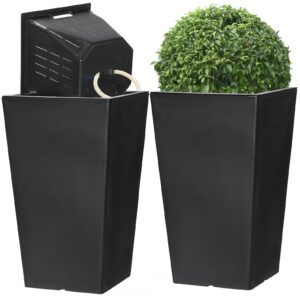Outdoor planters can turn practically any hard surface into a garden, including a stoop, balcony, or patio.
“That lush look is really something you can have just about anywhere,” said Julie Farris, the creator of the landscape design firms XS Space and Landstylist, both located in Brooklyn.
Read More: tall planters for outside
However, an assortment of too many different types of planters “can get to be a jumble, and look super-busy,” according to Ms. Farris. Thus, it’s critical to get started with a plan.
It is preferable to choose straightforward planters made of comparable materials if your intention is to employ greenery to define an outside area. Sometimes Ms. Farris builds the architectural design of a garden with long, rectangular Corten steel pots. She then incorporates a few ornamental pots into the landscape to provide a sculptural element and a calming effect.

“Adding something with age or texture” is always intriguing, she said, suggesting a planter that resembles rustic stone or a repurposed antique jar.
Is it OK to group many planters together? Indeed, Ms. Farris acknowledged, suggesting that the heights be changed. She remarked, “I like clusters of three to five, like a large one with two smaller ones to the side.”
Is it possible to mix and match different kinds of plants in one container? Naturally, but Ms. Farris would rather keep to one kind. “If the plant is by itself, you can simply see its form more easily and appreciate its color and texture,” the speaker remarked.
What is the ideal size for the planters? Although they must suit your location, she advised going with the larger size as it offers more room for root development and natural protection from inclement weather.
